The OnePlus One Review
by Joshua Ho on November 19, 2014 8:00 AM EST- Posted in
- Smartphones
- Android
- Mobile
- OnePlus
Software
While software tends to be a bit of a side note in reviews, it really is a crucial part of the experience. Without a good UI, the entire experience can be ruined as a result of these issues. This leads us to CM11S, the first official UI released by Cyanogen. For the most part, this UI really is just a lightly re-touched version of what we see in Nexus devices, but with a large number of extra features. For example, we see a revamp of the quick settings menu, with horizontal quick settings in the notification drawer along with a large number of available quick settings tiles in the quick settings menu.
Of course, CM11S goes much deeper. There really is an immense amount of customization available to the end user, from a custom boot animation to new icons, fonts, wallpapers, sounds, and overall system UI themes. While Holo is the official AOSP UI, CM11S ships with Hexo which is largely similar to Holo, but with a strong emphasis on hexagons throughout the UI. Many of the modifications that one might be used to from a custom ROM are present here, such as the ability to dynamically change the battery icon in the status bar, the way that the clock is displayed, reception representation, gestures to turn on the flashlight or the display, re-mapping the rather dim capacitive buttons, enabling or disabling on screen buttons, permissions management, changing the size of a pattern unlock, changing the lock screen altogether, and similar customizations.
While one can spend their time defending choice for the sake of choice, I definitely question the value of all of these additions. While some will value the ability to deeply customize their OS, for anyone that is even remotely unfamiliar with the idiosyncrasies of CyanogenMod and Cyanogen they will find their experience to be deeply frustrating. While I've already detailed some of the usability issues present in the camera application, many of these features fundamentally don't make sense. The notification drawer's "quick access ribbon" out of the box is simply a row of icons that can have very little meaning at times. While one can guess that an airplane is for airplane mode and a flashlight is for the torch, a circular arrow is utterly ambiguous in nature. Given the quick access nature of this menu, one might guess that this is a rotation lock toggle but for one reason or another it's actually the auto-sync toggle.
These issues extend to the point of being outright frustrating for average users. While one might guess that setting up lockscreen protection through the security menu as with almost every other UI, CM11S places it in the lockscreen menu which definitely can make for some level of difficulty in adapting from other devices. Something as simple as the pattern lock becomes complicated as one is given an almost ridiculous amount of choice from a 3x3 to 6x6 pattern. While a 4x4 or 3x3 pattern makes sense, 5x5 or 6x6 is almost guaranteed to be wholly unnecessary for an OS that's supposed to target a large number of users that may or may not be accustomed to the Cyanogen UI experience.
Finally, it's hard to argue for extensive customization of most visual aspects, as it's really far too easy for themes to rapidly diverge from meshing with Google design lines quite rapidly. While I'm sure that there are people out there that will like whatever themes are available using the CM11 theme engine, it's really hard to argue that this is a good thing for cohesive experience. The sheer number of issues with the camera alone is enough to question whether this level of customization is worth dealing with the likelihood of buggy releases.
While there are a lot of issues with Cyanogen's approach of throwing every possible option to the user, to their credit a great deal of the experience does come out quite enjoyable once one has spent enough time actually figuring out what each option does. For example, while on most phones it's pretty easy to fill the status bar with an NFC indicator, WiFi, cellular reception icons, battery icons, battery percentage text, and the time, this can be avoided on the OnePlus One. Various elements can be removed if desired, and things like the privacy guard application allow for a great deal of fine-tuning to ensure that applications don't have more permissions than necessary, although this could cause unintended behavior in an application. In addition, the overall experience has been consistently smooth and performant, with no real lag. The real issue here is that CM11S has taken the kitchen-sink approach to UI design, to the detriment of the user.


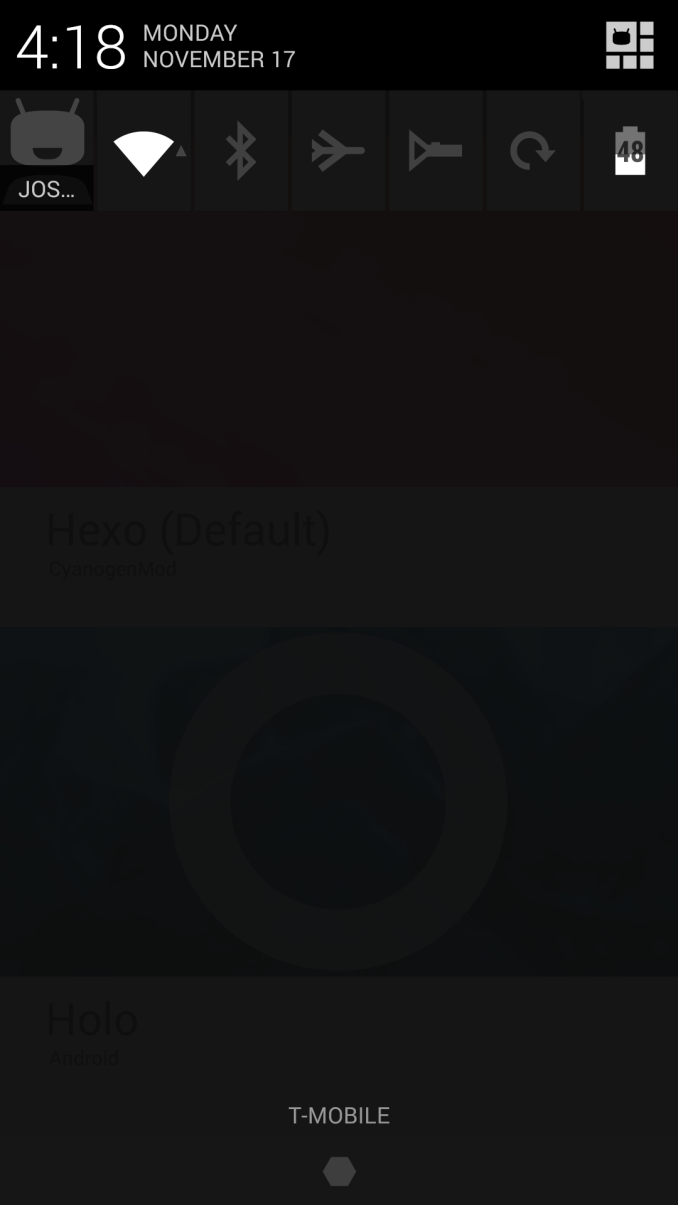

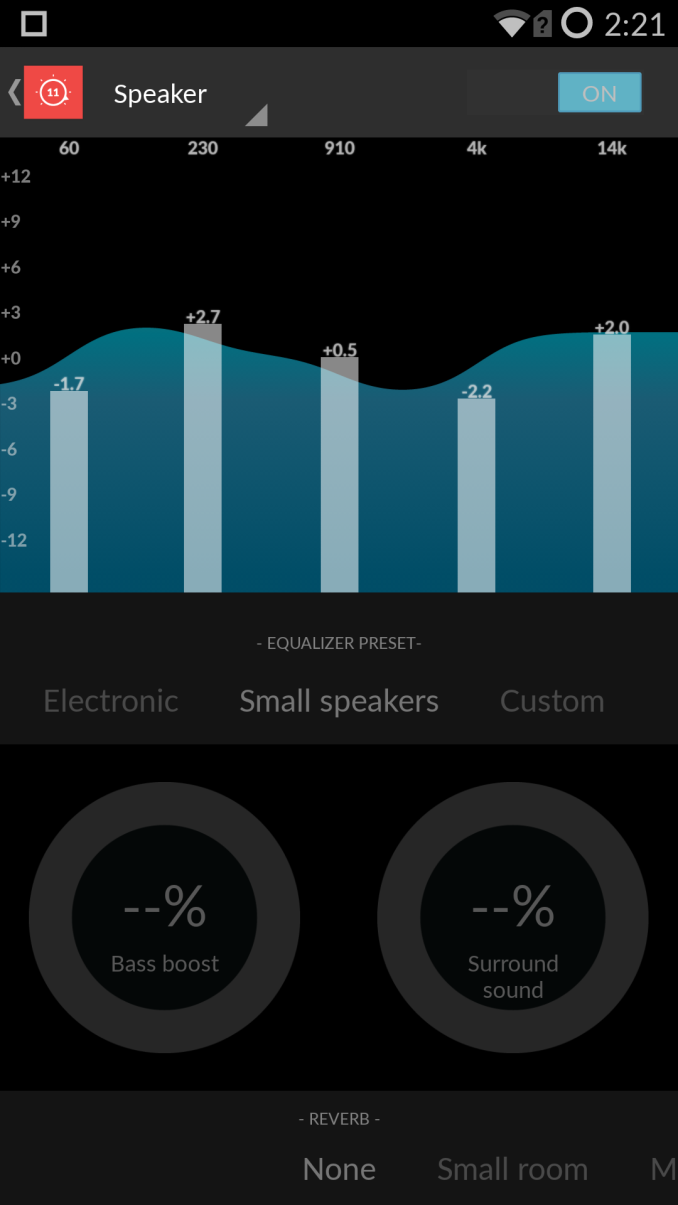
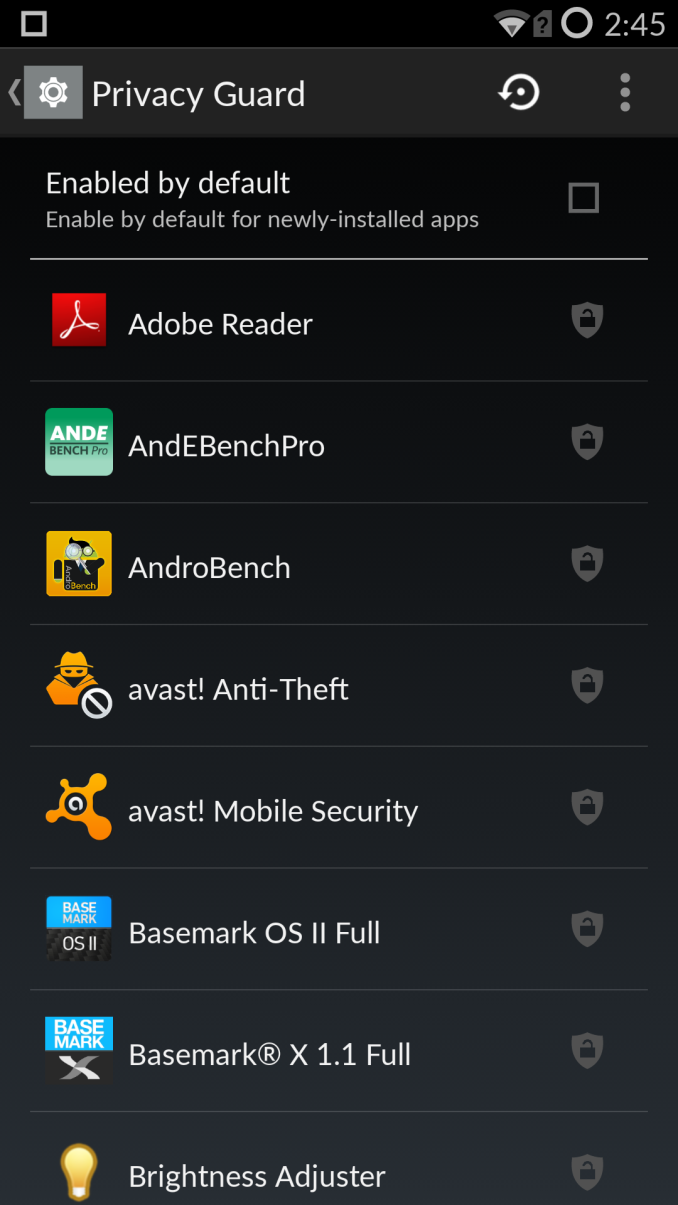
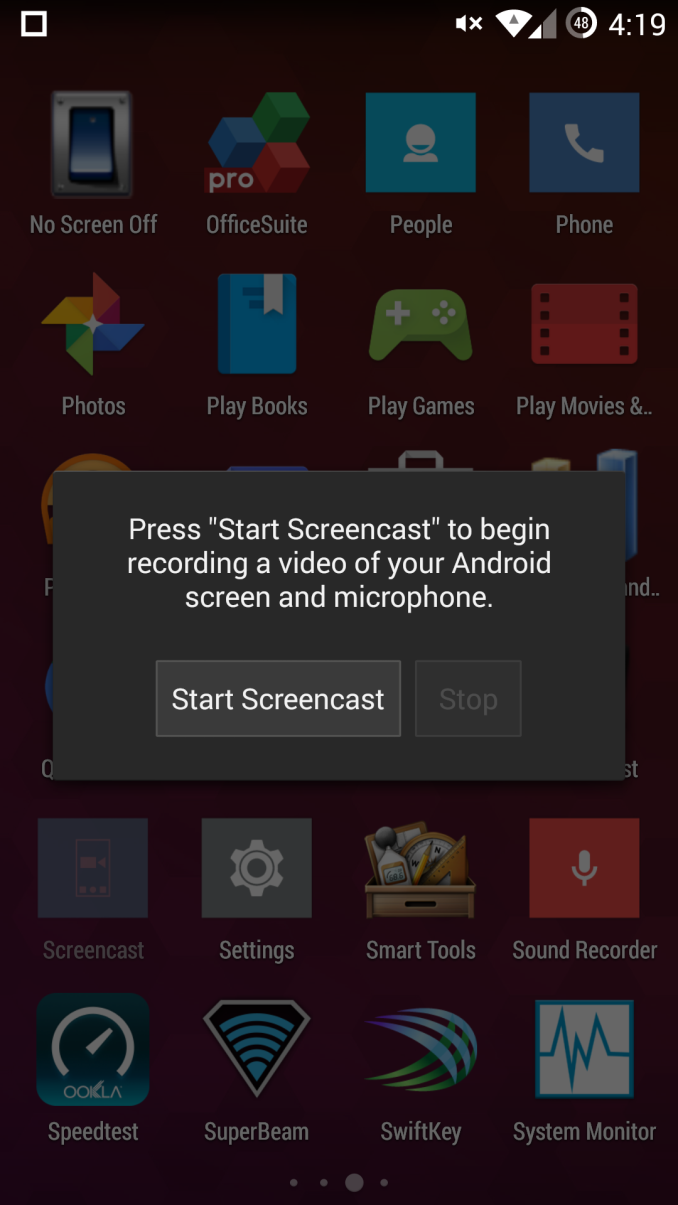
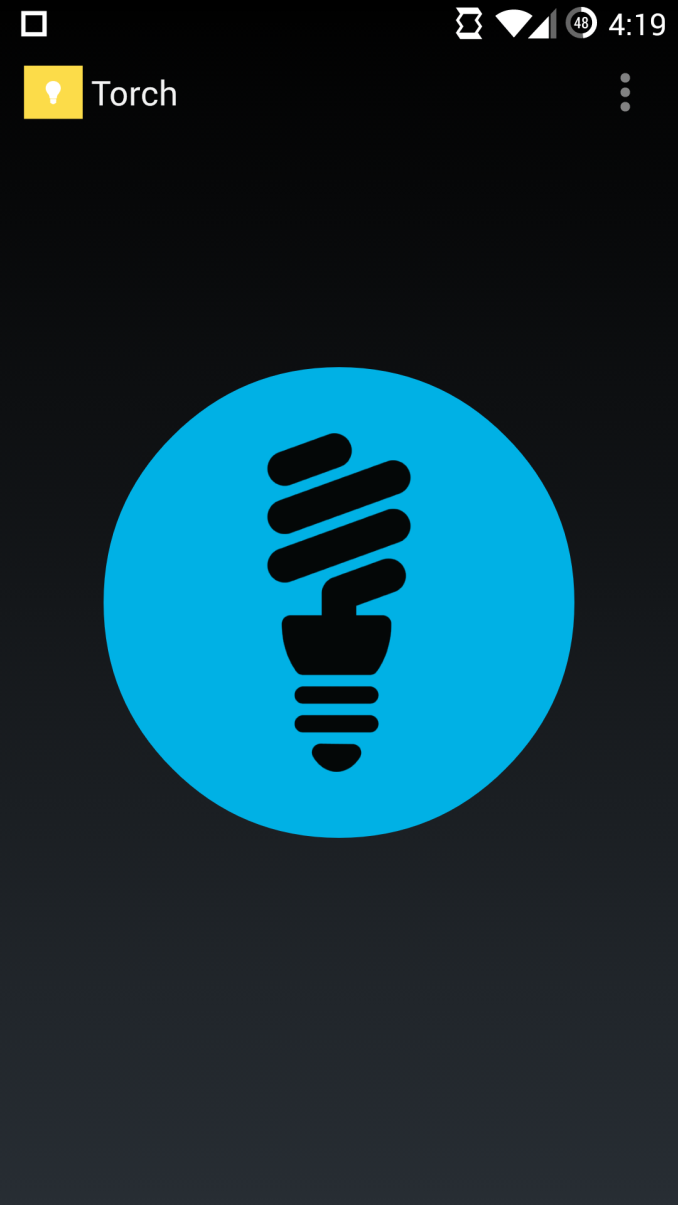
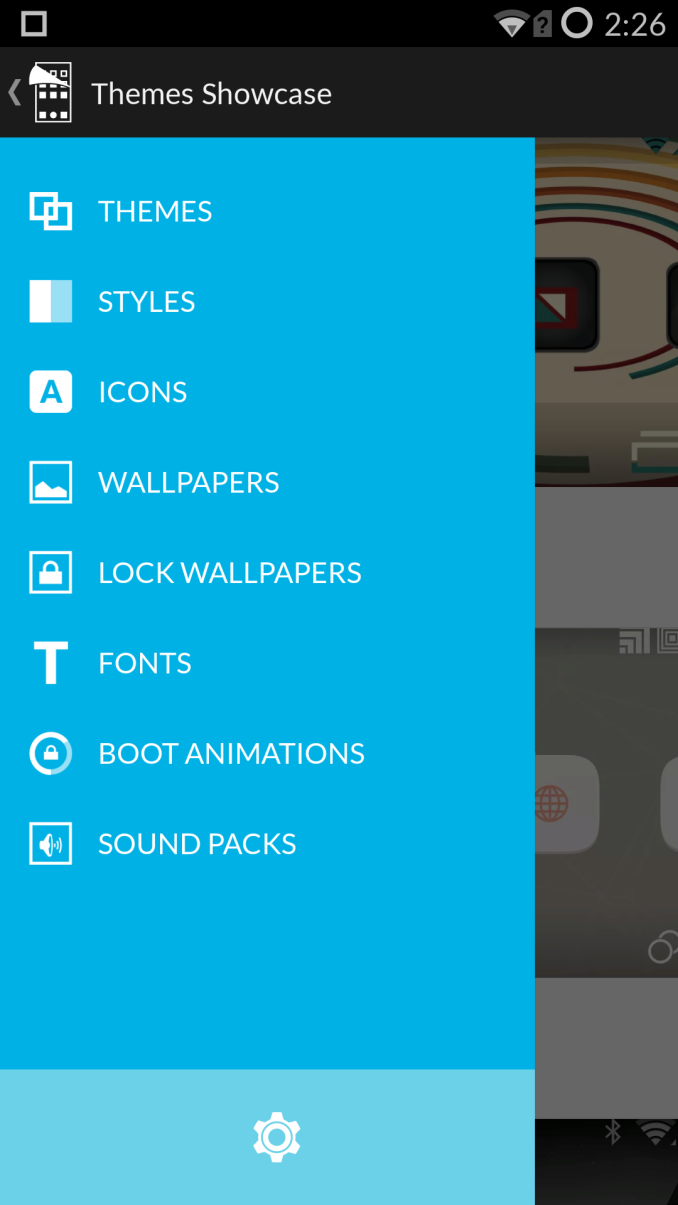
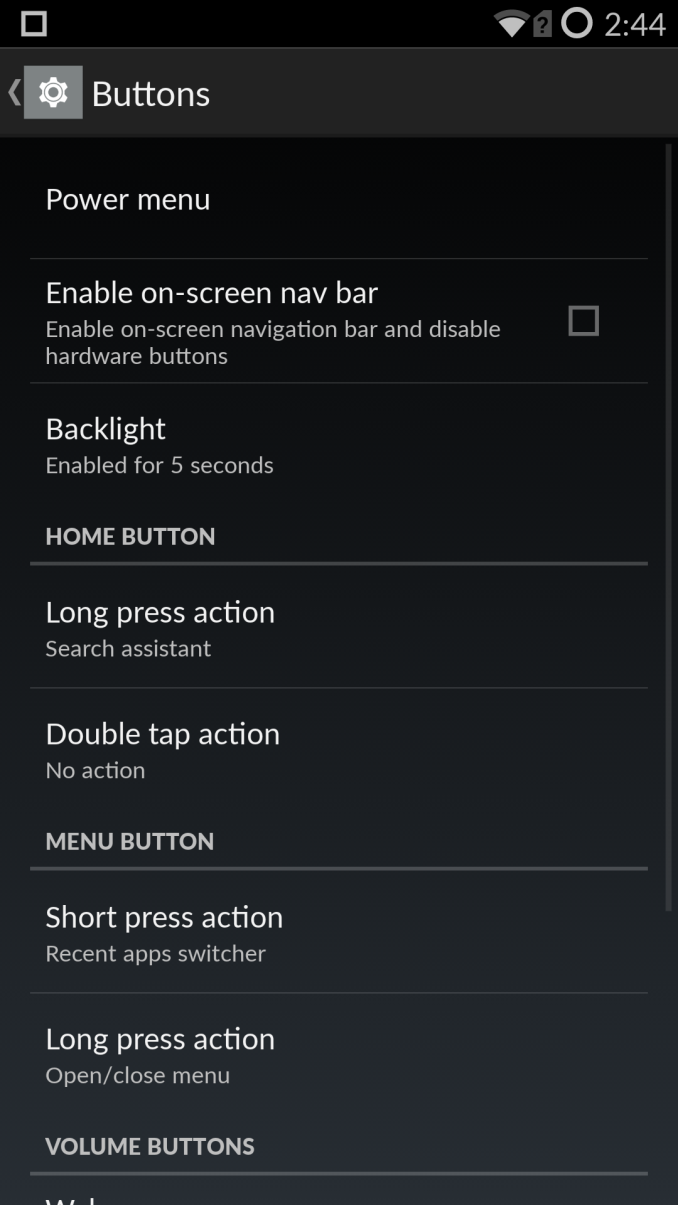
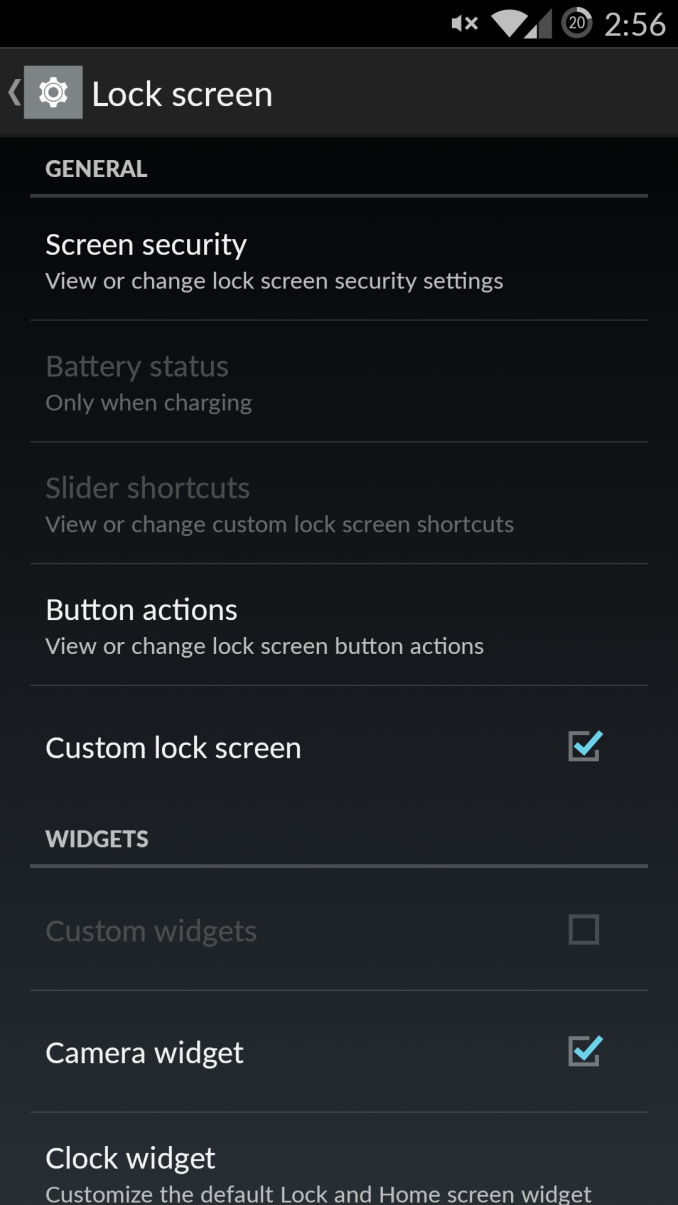
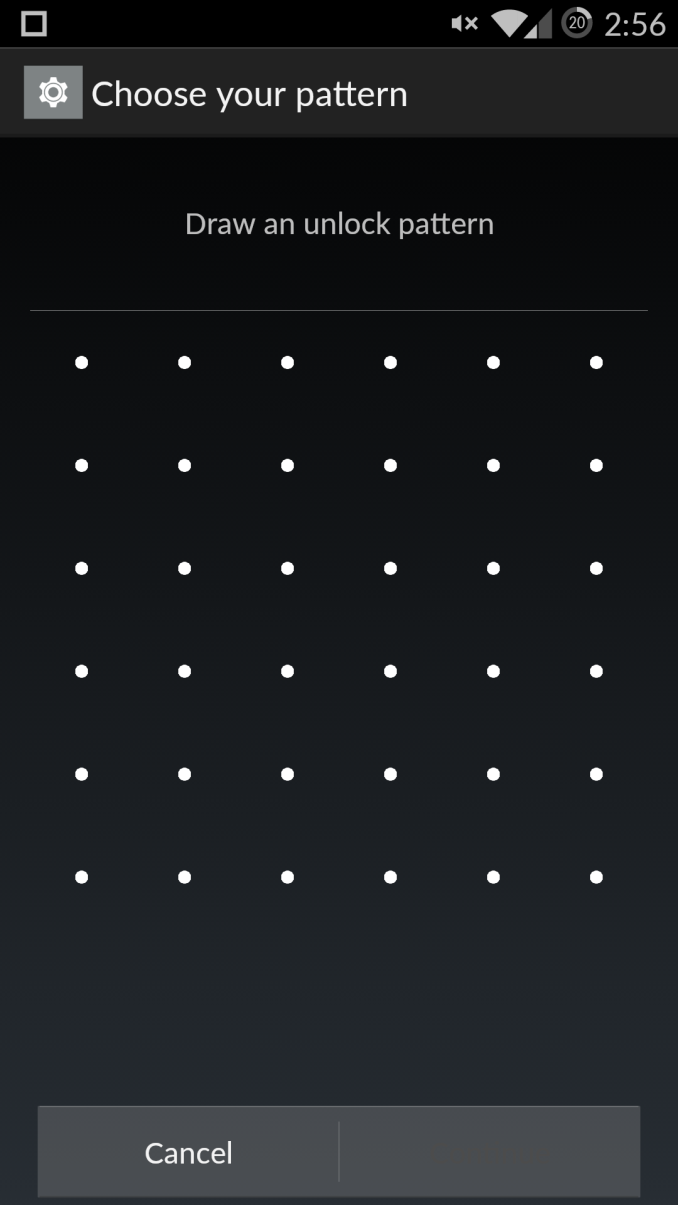
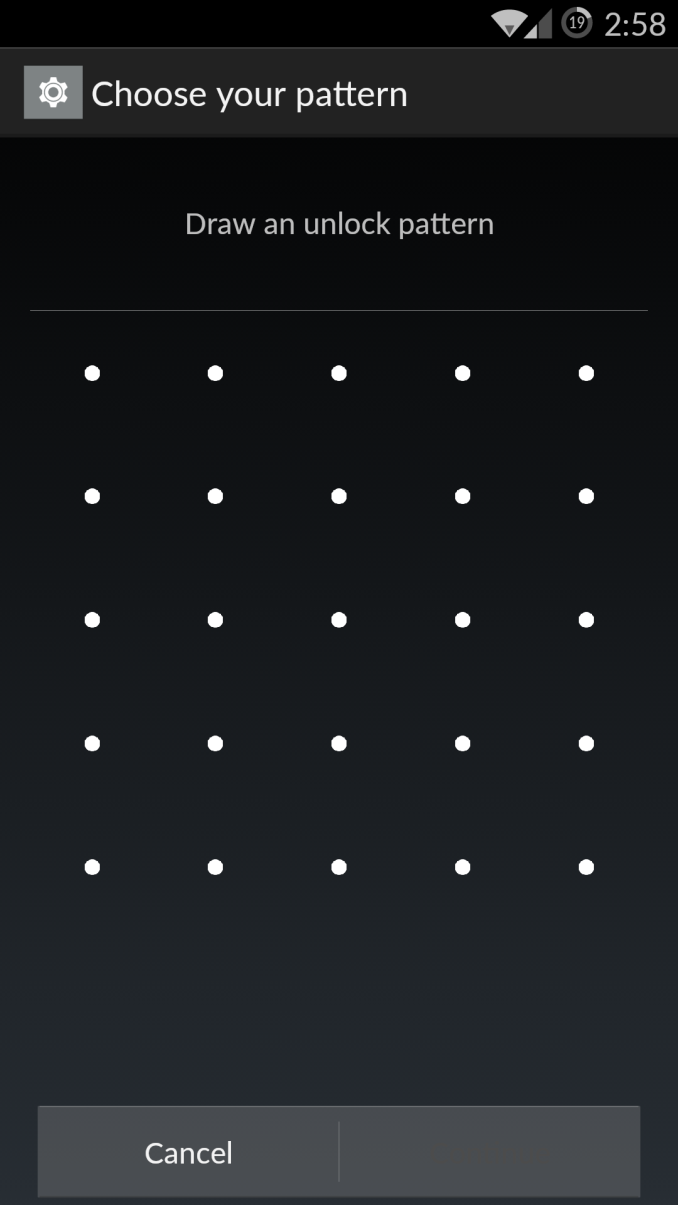
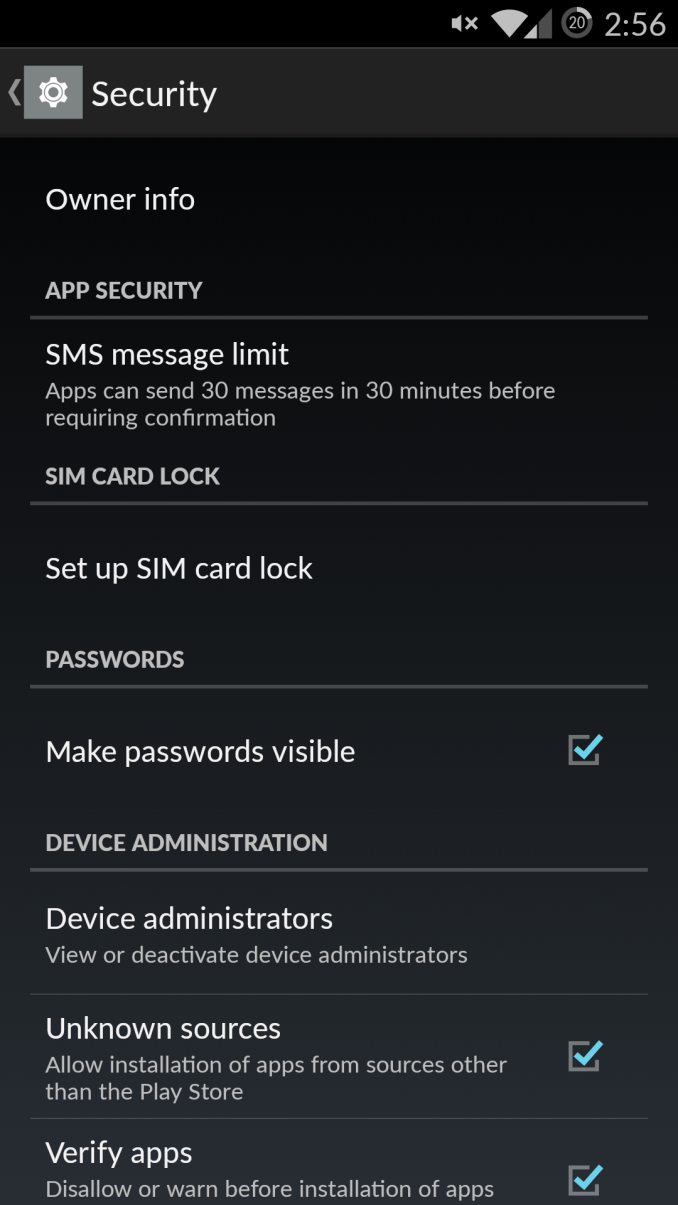
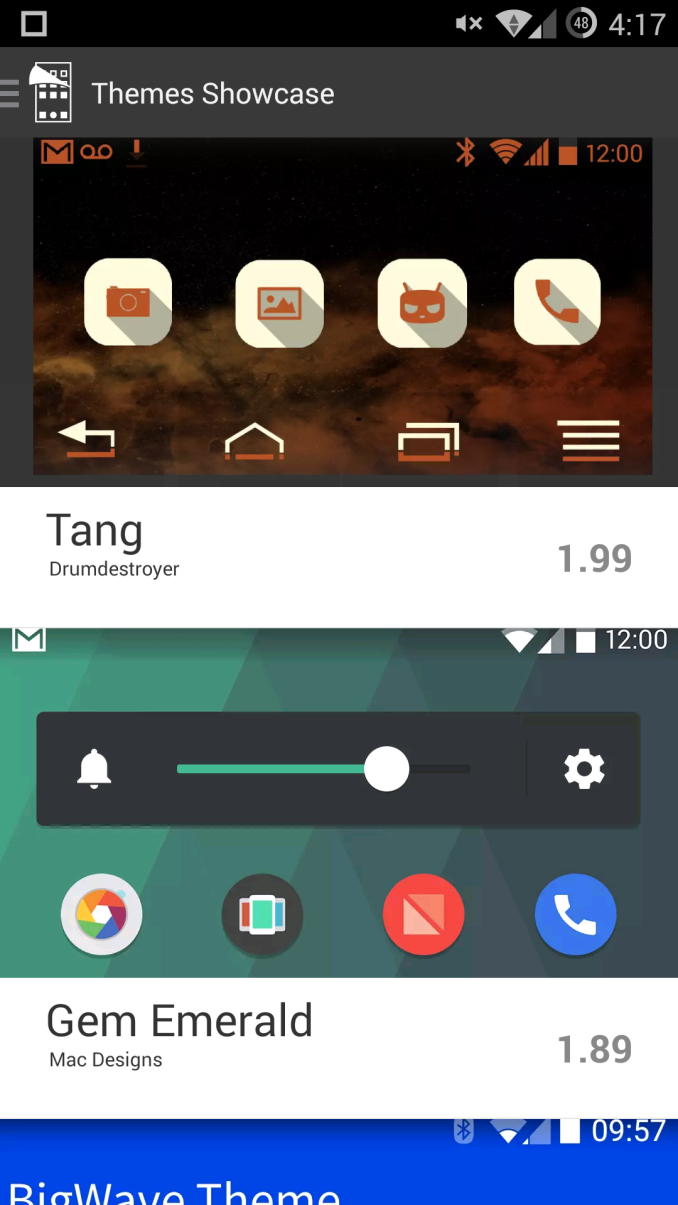
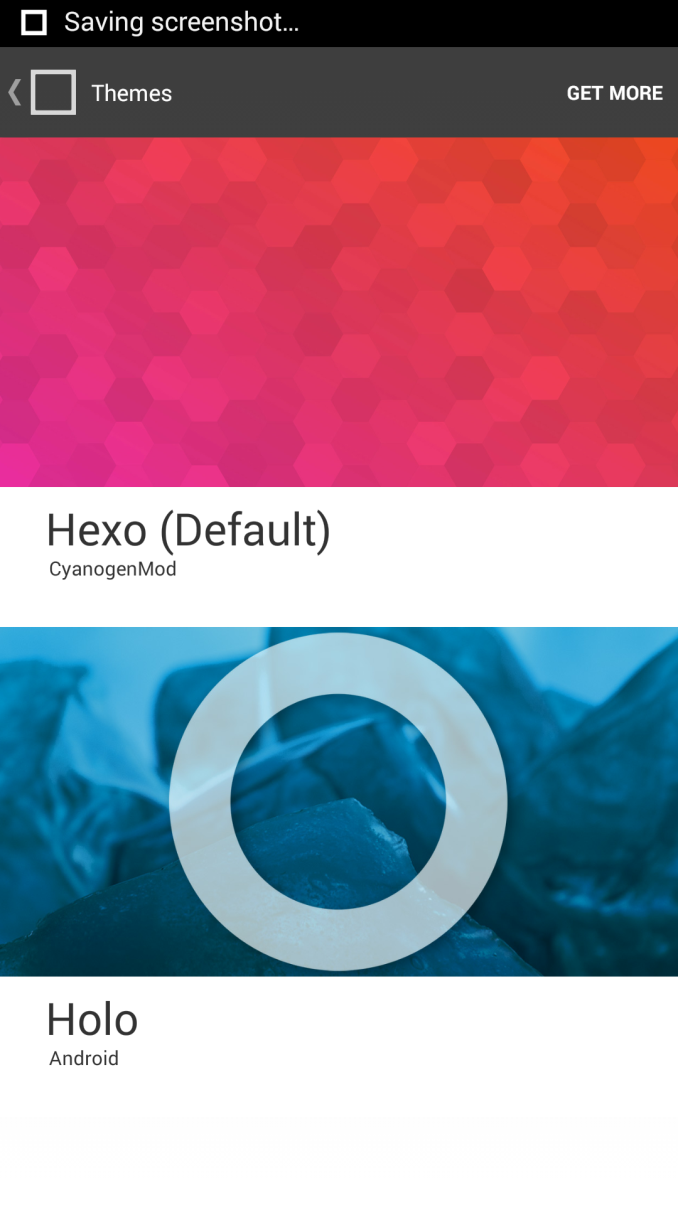








148 Comments
View All Comments
flyingpants1 - Wednesday, November 19, 2014 - link
It doesn't matter, since the screen takes most of the battery power. You have a point about the bezels, though.tipoo - Wednesday, November 19, 2014 - link
Yes, but the added area for the battery has consistently been shown to outweigh that con, ie larger phones are nearly always at the top of the battery life charts outside of outliers like super low power SoCs or huge thick batteries.srkelley - Thursday, November 20, 2014 - link
Honestly, the bezel sort of disappears while you're using this phone. I can definitely see how it would bother some people now, but in the end it can negligible if this is your sort of phone.Also, great review Joshua. I could not have done anything better myself here.
piroroadkill - Friday, November 21, 2014 - link
"but it couldn't have accommodated such a large battery with a smaller one."So there's no way I have a 4.7" phone with a 3300mAh battery then.. oh wait, I do..
DIYEyal - Monday, November 24, 2014 - link
I have a 5" phone with a 5000mAh battery.nevertell - Wednesday, November 19, 2014 - link
"While one can guess that an airplane is for airplane mode and a flashlight is for the torch, a circular arrow is utterly ambiguous in nature. Given the quick access nature of this menu, one might guess that this is a rotation lock toggle but for one reason or another it's actually the auto-sync toggle."Yes, but this is the same icon Google has used in their quick-settings-toggle widgets, with the only difference being that in this case, the quick settings ribbon is accessible in the drop down notifications shade instead on a homsecreen. Whilst it may be hard to understand the meaning of this icon, it is not like the same icon isn't used on most other devices to represent google's autosync.
JoshHo - Wednesday, November 19, 2014 - link
The issue is that this icon is given without any text to explain what it really is. It can be obvious to some but confusing to a lot of people.metayoshi - Wednesday, November 19, 2014 - link
I don't think the Auto Sync circle-arrow has actually been in the quick settings in any official Google ROM, correct me if I'm wrong, so I feel like CM and the rest of the AOSP community may have came up with it themselves. From what I remember, you have, User, Brightness, settings, WiFi, Bluetooth, Battery, Airplane Mode, Auto Rotate, and recently, Cast Screen. Android 5.0 finally added a flashlight officially. No Auto Sync mode.metayoshi - Wednesday, November 19, 2014 - link
Correction to my post: Auto Rotate was only on Tablets. The Auto Rotate quick setting was replaced by Mobile Data on Phones.tipoo - Wednesday, November 19, 2014 - link
Why does the Oneplus One set a record for final run score in the degradation test, when the 6, 6 plus, and HTC One are above it? Or is that including how long it runs relative to those?